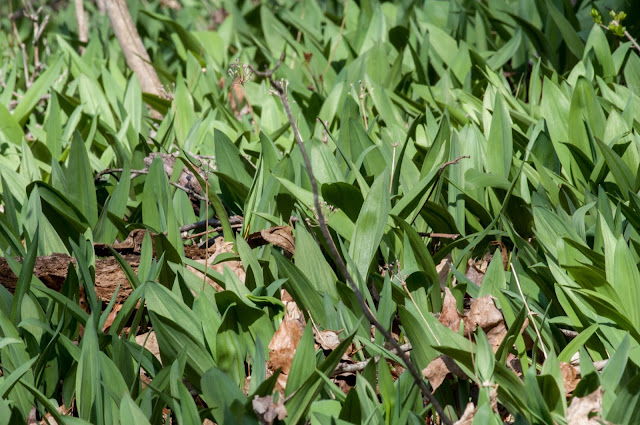 |
| Steamed buns filled with spruce curd |
The new growth of some conifers is just starting, and we can collect the tender tips to eat raw and create some recipes. We collect the tips from several conifers, including several types of spruce (
Picea species), fir (
Abies species), eastern hemlock (
Tsuga canadensis), and white pine (
Pinus strobus). The flavor of each species is different, so we taste the tips before we collect any to make sure we like the flavor, which can range from resinous, sour, tangy, similar to grapefruit, or fresh and piney. Conifer tips and needles do contain Vitamin C and carotenoids, along with minerals like potassium and magnesium.
An infusion can be made from any of the edible conifer tips by pouring boiling water over chopped or mashed needles and tips and allowing it to steep for 10 minutes or so. We also make a mixed conifer syrup with sugar, and use it to make soda by adding the syrup to seltzer. Both salt and sugar can be infused with the flavors of conifer tips by grinding them together with a mortar and pestle, then dehydrating the salt or sugar before storing in an air-tight jar. The salt can be used on fish or meats, and the sugar can be used to bake desserts.
 |
| Spruce curd inside meringue nests |
I infused crushed, young spruce tips in boiling water to make a strong tea, then made the curd with eggs, sugar, and the spruce infusion. The spruce curd can be eaten with a spoon, fill some dessert steamed buns, added to whipped cream for a light mousse, sandwiched between cookies, served with crepes, or used in many other applications. I find that cooking or heating the tips makes them a bit tough, so the minced bits are added to the cooled curd at the end.
Spruce Tip Curd makes about 3 cups
2c. spruce tips, chopped or crushed with mortar and pestle
2 1/2 c. boiling water
1 c. spruce tips
1/3 c. cornstarch
1 c. sugar
pinch of salt
5 egg yolks
1 Tbsp. lime juice
1 Tbsp. butter
2 Tbsp. finely minced spruce tips
1. Chop or crush 2 c. of spruce tips and place them in a heat proof bowl. Pour the boiling water over the crushed tips and cover, and allow them to infuse for 15-30 minutes, until cooled a bit.
2. Using a coffee strainer, strain the crushed tips from the infusion. In a blender, add the additional 1 c. of spruce tips and the infusion. Blend for 15 seconds. Strain the infusion again to remove the solids. You will need 2 c. of infusion to continue, it will be milky-white.
3. In a sauce pot, combine the cornstarch, sugar, and pinch of salt and whisk until no lumps can be seen. Add 2 c. of spruce infusion, egg yolks, and the lime juice.
4. Over medium-low heat, cook the curd slowly while running a rubber spatula around the sides and bottom of the sauce pot often. It will take 5-8 minutes for the curd to thicken, and once it starts boiling slowly, cook for an additional minute. Stir in the butter, and remove from the heat.
5. Allow the curd to cool in a bowl, covered with plastic wrap placed directly on the surface (otherwise a skin will form) for about 15 minutes. Stir in the minced spruce tips, then recover and refrigerate until service.
























